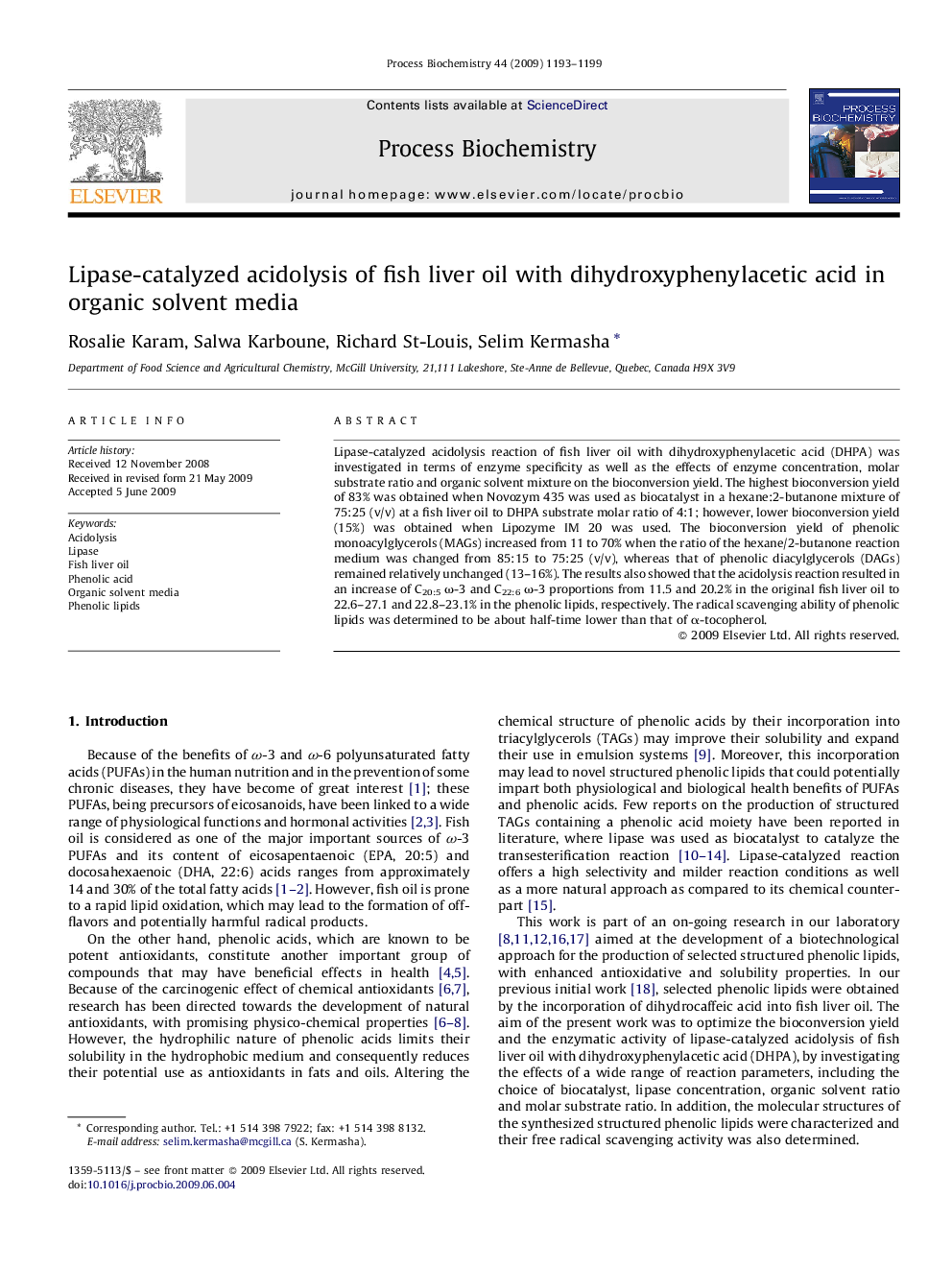| Article ID | Journal | Published Year | Pages | File Type |
|---|---|---|---|---|
| 35087 | Process Biochemistry | 2009 | 7 Pages |
Lipase-catalyzed acidolysis reaction of fish liver oil with dihydroxyphenylacetic acid (DHPA) was investigated in terms of enzyme specificity as well as the effects of enzyme concentration, molar substrate ratio and organic solvent mixture on the bioconversion yield. The highest bioconversion yield of 83% was obtained when Novozym 435 was used as biocatalyst in a hexane:2-butanone mixture of 75:25 (v/v) at a fish liver oil to DHPA substrate molar ratio of 4:1; however, lower bioconversion yield (15%) was obtained when Lipozyme IM 20 was used. The bioconversion yield of phenolic monoacylglycerols (MAGs) increased from 11 to 70% when the ratio of the hexane/2-butanone reaction medium was changed from 85:15 to 75:25 (v/v), whereas that of phenolic diacylglycerols (DAGs) remained relatively unchanged (13–16%). The results also showed that the acidolysis reaction resulted in an increase of C20:5ω-3 and C22:6ω-3 proportions from 11.5 and 20.2% in the original fish liver oil to 22.6–27.1 and 22.8–23.1% in the phenolic lipids, respectively. The radical scavenging ability of phenolic lipids was determined to be about half-time lower than that of α-tocopherol.
